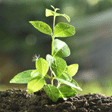- Home >
- Our Actions >
- Ambassador report
13
Comments
Biological Removal of Water Hyacinth by Nature bodies |
||||||||||||
|---|---|---|---|---|---|---|---|---|---|---|---|---|
|
by Dharmendra Kapri | 24-08-2013 16:15
|
||||||||||||
|
Water hyacinth, a native of Brazil was introduced in Calcutta Botanical Garden way back in 1895 to decorate garden ponds. Subsequently, this aquatic plant which decorated the garden ponds, village lakes, streams etc across the country. It has an alarming multiplication rate & doubles in as little as twelve days.
With an alarming multiplication rate, this ornamental aquatic plant gradually proved to be a menace. It even now, in addition to various socio-economical problems, affects irrigation, fisheries, water transport etc. Efforts were made to contain its growth. However, expensive mechanical cleaning proved to be ineffective & Chemical cleaning have variety of ecological disadvantageous.
Our efforts scientifically proved that neochetina eichhornia is effective under the climatic conditions of Chhattisgarh to clean vicious aquatic weed, water hyacinth, which poses threat to socio-economic life of Chhattisgarh. Water hyacinth, ?Eichhornia crassipes? is a floating aquatic plant grows in lakes, streams, ponds and even anchored in mud. It is considered as the world?s worst aquatic plant. As a free floating plant, all its nutrients come from water alone. It forms dense mats over the water preventing oxygenation and alters ecology of the water body. It also severely impede the flow of water in canals, thereby reducing availability of water to farmers? field. A water body once affected with water hyacinth degrades water quality, losses its beauty and utility. Generally it becomes the ideal place to deposit waste materials reducing depth and width. Finally, the water body itself extinct. PROBLEMS Degradation of water quality Increased growth of mosquitoes Problem related to fishing Clogging of intakes of irrigation & water supply systems Extinction of water bodies Deteriorating ground water level CONTROL METHODS
Best method to control water hyacinth is to protect water bodies from its clutches.
Following methods are available for removal of water hyacinth from an affected water body.
?nbsp Chemical cleaning ?nbsp Mechanical cleaning ?nbsp Biological cleaning MECHANICAL CONTROL Mechanical removal of water hyacinth is considered as the best short-term solution to prevent the proliferation of the weed.
It is, however, labour intensive and hence expensive and only possible in relatively small areas. CHEMICAL CONTROL Chemical operation mainly by using herbicides can definitely destroy the grown up vicious weed.
Leaving the environmental effects, rapid reproduction ability of water hyacinth defeats even this hazardous method. The method also requires skills. BILOGICAL CONTROL Biological control is engagement of host specific natural enemies to reduce the population density of a noxious pet or weed. It is said to be environmentally benign, as the control agent tend to be self regulating. Control programmes are usually inexpensive due to the fact that the control agents once released in a water body will multiply themselves and hence less labour intensive.
Another advantage of this method is that the agents will dissolve themselves when it is not able to locate its food. With the assistance of Dr. Sudhir Chipre, a local Biologist, we identified the weevil. Under the guidance and patronage of our Teacher Guide Dr. Panu Haldar we conducted laboratory experiments in our school laboratory. During the course of our laboratory experiments, we studied the habits, growth, multiplication rate etc of the weevil. On successful laboratory experiments we defined the following methodology for adoption in the experiments to be conducted in an open water body. Our laboratory experiments revealed that if sufficient number of weevil is released in a water body the following will be the result: -
Nature bodies released 16 Neochetina Eichhornia weevil cultured in our laboratory on 20.08.10The biological agent gave the following results :- # In the first week almost the entire leaves were eaten away # In the second week biological agent started eating steam # In the third and fourth week it eaten away petioles, and # In the fifth week it eaten away the roots. # Finally, Nature bodies proudly presented a clean Banduwa Talab as... |
||||||||||||
 .jpg) 
|
||||||||||||
|
|
||||||||||||










 Previous : Global Warming & Snowpiercer
Previous : Global Warming & Snowpiercer









13 Comments
We have lots of this in our seven lakes and the fisherfolk spend many hours removing the plants from the lake by hand and just piling them up on the lakeshore till they rot. Some creative people have made arts and crafts out of the water hyacinth too like bags and hand-made paper.
Posted 01-09-2013 08:46
The flower looks so beautiful though :-(
Thank you for sharing, you did a great job Dharmendra!!
Posted 26-08-2013 14:55
thanks a lot for your efforts and sharing us.
Posted 26-08-2013 02:09
Good report & excellent pictures.
Posted 26-08-2013 01:33
Thanks for good pics
Posted 26-08-2013 01:04
thanks anwari....!
Posted 25-08-2013 20:57
thanks sahadev...!
Posted 25-08-2013 20:56
thanks Anne..!
Posted 25-08-2013 20:56
Thanks a lot arushi...!
Posted 25-08-2013 20:55
Thanks for great post...
Posted 25-08-2013 04:15
nic pics! Thanks for sharing!
Posted 24-08-2013 21:00
Comprehensive :)
Posted 24-08-2013 20:18
Thanks for sharing with us your efforts , pics are good.
Posted 24-08-2013 16:40